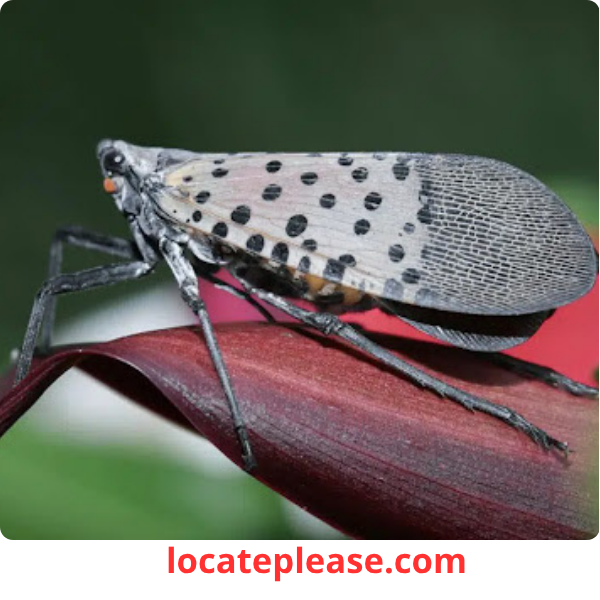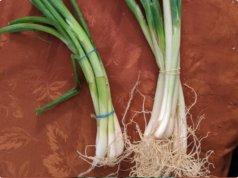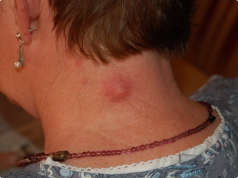It looked almost beautiful.
Perched on my maple tree one humid afternoon, it fanned its wings — soft gray with delicate black spots. Then, in a flash, a burst of crimson red beneath.
Like a tiny, winged jewel.
I almost didn’t want to hurt it.
Then I pulled out my phone.
One photo.
One search.
One chilling result:
Spotted lanternfly.
Lycorma delicatula.
Invasive. Destructive. Destroy on sight.
That pretty little bug wasn’t a marvel of nature.
It was a home wrecker.
A tree vampire.
A one-insect apocalypse.
And if you see one?
👉 Squish it. Smash it. Salt the earth.
Because this isn’t just a bug.
It’s an ecological emergency.
🐞 Meet the Enemy: The Spotted Lanternfly
Native to China, India, and Vietnam, the spotted lanternfly hitched a ride to the U.S. on a shipment of stone in 2014, landing in Berks County, Pennsylvania.
Since then, it has spread like wildfire — now confirmed in 14+ states, including New York, New Jersey, Maryland, Ohio, Indiana, and beyond.
And unlike most bugs, it doesn’t just live on plants.
It destroys them.
🌳 What Makes It So Dangerous?
The spotted lanternfly may look delicate — but it feeds like a monster.
Here’s how it kills:
- Pierces bark with a needle-like mouthpart
- Sucks sap from stems, branches, and trunks
- Excretes honeydew — a sticky, sugary waste
That honeydew? It’s not just gross.
It’s toxic.
It coats leaves and bark, then breeds sooty mold — a thick, black fungus that:
- Blocks sunlight
- Chokes photosynthesis
- Weakens trees
- Attracts wasps, ants, and other pests
Within weeks, once-healthy trees look like they’ve been scorched — leaves withered, limbs brittle, sap dripping like tears.
🍇 Which Plants Are at Risk?
This bug doesn’t pick favorites.
It attacks over 70 plant species, including:
- Grapevines — devastating to vineyards and wineries
- Fruit trees — apple, peach, cherry, plum
- Hardwood trees — maple, walnut, birch, willow
- Ornamental shrubs — roses, hydrangeas, and more
And the worst part?
It doesn’t kill trees instantly.
It weakens them slowly — making them vulnerable to:
- Disease
- Drought
- Winter die-off
- Secondary pests
And once an area is infested?
The damage spreads fast.
🔍 How to Identify a Spotted Lanternfly
Adult (July – December)
- About 1 inch long
- Gray wings with black spots
- Bright red underwings with black bands
- Flies in short, fluttering bursts
- Often seen on tree trunks, stones, or walls
Nymph (May – September)
- Young: Black with white spots
- Older: Bright red with black and white stripes
- Jumps like fleas
- Found on leaves, stems, and ground cover
Eggs (September – June)
- Laid in gray, mud-like patches
- About the size of a quarter
- On tree trunks, rocks, vehicles, outdoor furniture, firewood
- Each mass contains 30–50 eggs
💡 Pro Tip: Check your car, bike, or firewood before moving — lanternflies travel by hitchhiking.
🚫 Why You Should Never Let It Live
You might think:
“It’s just one bug.”
“It’s not hurting anything.”
But here’s the truth:
- One female can lay up to 500 eggs per season
- Infestations grow exponentially
- No natural predators in the U.S.
- No effective, eco-friendly pesticide for large-scale use
This isn’t about cruelty.
It’s about ecological defense.
Every lanternfly you kill is:
- Hundreds of trees saved
- Countless vineyards protected
- Your backyard preserved
✅ How to Kill It (Humanely & Effectively)
1. Step on It
Yes, really.
Carry a shoe, trowel, or fly swatter when walking through your yard.
See it?
Squish it.
2. Use Rubbing Alcohol
Drop it into a container with 70% isopropyl alcohol — kills instantly.
(Also works for egg masses — more on that below.)
3. Scrape Off Egg Masses
- Use a plastic card, putty knife, or paint scraper
- Scrape eggs into a sealed plastic bag
- Soak in alcohol or hand sanitizer for 24 hours before tossing
- Never just scrape and leave — eggs can survive and hatch later
🛡️ How to Protect Your Yard
✅ Inspect trees and plants monthly — especially in late summer and fall
✅ Remove Tree of Heaven (Ailanthus altissima) — the lanternfly’s favorite host plant
✅ Use sticky bands on tree trunks to trap climbing nymphs (check daily — remove trapped bugs)
✅ Report sightings — help authorities track and contain the spread
📌 Report to your state’s Department of Agriculture or use the Spotted Lanternfly App (available in most infested states).
🌍 This Is Bigger Than Your Backyard
The spotted lanternfly isn’t just a nuisance.
It’s a threat to agriculture, forestry, and our way of life.
- Pennsylvania’s wine industry: $75 million at risk
- New York’s orchards: under siege
- Homeowners: watching their trees die
And once it spreads further?
There may be no turning back.
🧨 Final Warning: This Is War — And You’re on the Front Lines
You don’t need a uniform.
You don’t need a weapon.
You just need a shoe, a spray bottle of alcohol, and the will to act.
Because every spotted lanternfly you destroy is a victory for nature.
So the next time you see that flash of red —
Don’t hesitate.
Kill it. Report it. Protect your world.
This isn’t a bug.
It’s a bio-invasion.
And the time to fight back is now.










